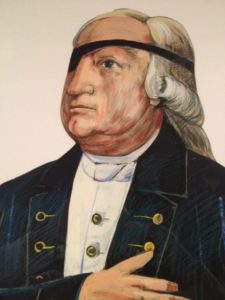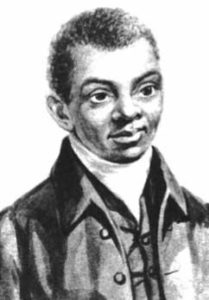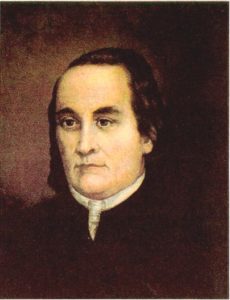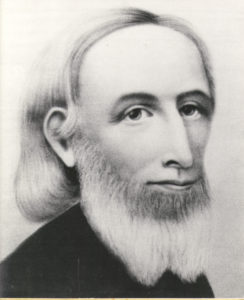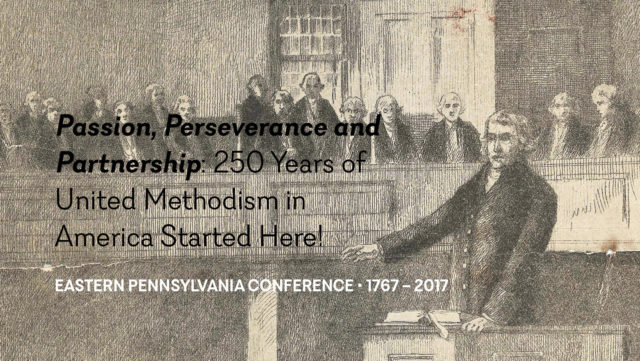
In 1767, Captain Thomas Webb and Joseph Pilmore led the push to establish the first Methodist classes in Philadelphia and other venues along the East Coast of the new colonies. They had remarkable success, building a foundation that grew into today’s United Methodist Church.
New adherents in Philadelphia’s fledgling Methodist Prayer Society gathered in warehouses and courtyards for two years before building a permanent meetinghouse in 1769. Historic St. George’s United Methodist Church, in the Old City neighborhood, is now the oldest church built by Methodists still in continuous use in the United States.
At our Annual Conference this year, June 15-17, we will celebrate the “Sestercentennial,” or 250th anniversary, of that first Methodist society. We will mark the occasion with special commemorative performances, publications and displays. Historic St. George’s, which houses a museum and our Conference Archives, is already making plans to celebrate its Sestercentennial in 2019.
Conference members wearing colonial-era garb will portray several early ancestors of our United Methodist denomination:
Captain Thomas Webb, a British officer serving in America was converted to Methodism in 1765 by John Wesley’s preaching. He joined a Methodist society, was licensed to preach, and helped establish Methodist societies and meetinghouses, where he often led worship and preached in his regimental uniform, with his sword on the pulpit.
Harry Hosier, known also as “Black Harry,” reportedly was an illiterate, unordained but phenomenal African American Methodist preacher who accompanied and preached along with Francis Asbury, Thomas Coke and others. He was described by some as the greatest preacher of his day.
Mary Evans Thorne, one of the first women to have a leadership role in the Methodist movement in the United States, was appointed by Joseph Pilmore a lay class leader, able to perform pastoral duties, in Philadelphia in 1770.
Philip William Otterbein, a First Reformed Church pastor, and Martin Boehm, a pastor and bishop in the Mennonite Church, which expelled him for being too evangelical, met in 1767 while worshiping at Long’s Barn in Lancaster. They embraced one another and declared, “Wir sind Brüder” (We are brethren). Together they formed the United Brethren in Christ and became its first bishops. Both maintained close relationships with early Methodists. Two centuries later their church merged first with Jacob Albright’s Evangelical Church in 1946 and then with the Methodist Church in 1968 to form The United Methodist Church.
Portrayed by members, these forebears of the faith will introduce themselves and offer the blessing each time the conference session breaks for lunch and dinner. Then several of them will individually occupy the storytelling bench next to the 250th anniversary display table in the exhibits area, where they will bring history to life for visitors by sharing their stories.
“The Annual Conference will welcome a special visitor from the past each day,” said Donna Miller, Senior Interpreter at Historic St. George’s UMC, “reminding us of our roots and encouraging us to make the future as vital as our foundation.”
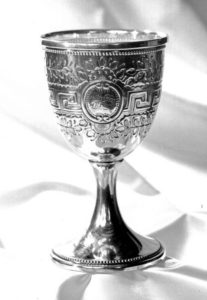 The anniversary display area, adorned by a colorful banner, will showcase precious early Methodist artifacts. They will include a silver chalice gifted by John Wesley himself and items belonging to Methodist ancestors like our circuit-riding first bishop Francis Asbury and the pioneering, black preacher extraordinaire Harry Hosier.
The anniversary display area, adorned by a colorful banner, will showcase precious early Methodist artifacts. They will include a silver chalice gifted by John Wesley himself and items belonging to Methodist ancestors like our circuit-riding first bishop Francis Asbury and the pioneering, black preacher extraordinaire Harry Hosier.
In addition, the anniversary celebration committee, led by Bishop Peggy Johnson, will distribute a free commemorative booklet containing profiles of important figures in our conference’s history and a free desk calendar that highlights historic dates and the six United Methodist Heritage sites within our conference boundaries.
Also on the planning committee are the Rev. Fred Day, former pastor of St. George’s and now head of the General Commission on Archives and History, and members of the conference’s Historical Society (which is among the oldest in the denomination, since 1860) and the conference Commission on Archives and History.
While the celebration does not have a formal place on the conference session’s agenda, members and guests will have chances to celebrate their heritage at mealtime and during visits to the active display area.
“We hope this celebration—what people will see, hear and take with them—can remind us of who we are as a faithful people who are called to carry forward the work of John Wesley, Francis Asbury and other ancestors who led the way and set an example for all of us,” said Bishop Johnson.
The anniversary theme, “Passion, Perseverance and Partnership: 250 Years of Methodism in America,” signifies traits that are historically Methodist and undoubtedly needed now more than ever:
- a passion for sharing the gospel and making disciples of Jesus Christ;
- a perseverance that endures and overcomes divisive conflict and other challenges; and
- a commitment to partnership among clergy and laity and among churches that are connectional in their stewardship and mission.
“Much has happened in our history, and much remains to be done,” said Donna Miller. “Our special guests will bring history to life, and material will be distributed to help attendees spread the word. We hope many will continue this celebration, this anniversary party, in their home churches.”

